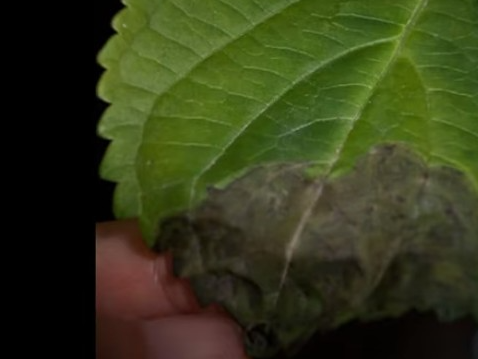As a sunflower lover it can be alarming to see those bright green leaves suddenly mottled with dark splotches. But don’t despair! With some detective work you can get to the root of the issue and restore your sunflowers’ radiance.
Examining the Leaves
The first step is examining the affected leaves closely. Are the spots irregular or defined? This can provide clues to the culprit, whether it’s a fungal or bacterial infection versus pest damage
Run your fingers over the spots – are they dry and crusty or watersoaked? Check the undersides too. Also inspect new leaf growth – if emerging leaves quickly develop spots it points to a systemic issue like soil pathogens or nutrient deficiency rather than isolated pest damage.
Environmental Factors
Sunflowers thrive in full sun and moist, well-draining soil. But insufficient sunlight, overly wet soil, and dramatic shifts in weather can stress plants, making them vulnerable to infections.
Insufficient Sunlight
Without adequate sunlight, sunflower leaves may turn chlorotic, with yellowing between veins. This impaired photosynthesis makes them prone to secondary pathogens like bacteria and fungi. Ensure sunflowers get at least 6-8 hours of direct sun daily.
Excess Moisture
Overwatering leads to root rot and soggy soil – a welcoming habitat for soil-borne fungi like Sclerotinia, Rhizoctonia, Fusarium, and Verticillium. Allow the top few inches of soil to dry between waterings, and improve drainage if needed.
Temperature Extremes
Sunflowers relish warm temperatures around 70-75°F. But cold snaps and heat waves shock the plant, weakening its defenses against diseases. Provide shelter from wind, monitor soil moisture closely in temperature swings, and consider protective row covers.
Common Sunflower Diseases
Once environmental factors are ruled out, identifying the disease is key. Here are some usual suspects behind black spots on sunflower leaves:
Downy Mildew
Yellow spots on upper leaf surfaces expand into gray mildew on the undersides during damp, cool conditions. Improve airflow and avoid overhead watering.
Sclerotinia and Rhizoctonia
These fungal pathogens cause water-soaked lesions that expand into large black patches. Remove diseased tissue promptly and avoid crowding plants.
Bacterial Leaf Spot
Angular, water-soaked spots with yellowing halos indication bacterial infection. Copper sprays at first onset can help control spread.
Septoria Leaf Spot
Small, circular spots with dark borders expand into large lesions. Fungicides applied preventively thwart progression.
Alternaria Leaf Spot
Brown target-like spots appear on lower leaves after rains, spreading upward. Improve drainage and air circulation.
Pest Problems
Spider Mites
These tiny pests feast on leaf undersides, causing stippled yellow spots that turn brown. Knock them off with strong water streams and release predatory mites.
Sunflower Bud Moth
Larvae tunnel into buds, causing wilting and necrosis. Handpick larvae, use pheromone traps, and rotate locations.
Sunflower Beetle
Adults and larvae skeletonize leaves, leaving behind shot-hole damage and black spots. Cover young plants with floating row covers.
Nutrient Deficiencies
Lack of macro and micronutrients also induces leaf spotting. Yellowing between leaf veins points to nitrogen deficiency. Interveinal chlorosis signals low magnesium or potassium. Get a soil test annually and amend accordingly.
Prevention and Treatment
While some leaf spot diseases are incurable, prompt intervention can limit damage. Promote vigor through proper planting, watering, light, and nutrients. Inspect regularly and remove diseased tissue. Disinfect tools between plants. Improve airflow. Apply fungicides/insecticides as needed, following label directions. With vigilance and patient care, your sunflowers can thrive spot-free!
The Impact on Plant Health
When black spots appear, its not just a cosmetic flaw. These blemishes can hinder photosynthesis, the plants lifeline for growth and vitality. Left unchecked, they can spell disaster for your sunny blooms.
Disease-Resistant Cultivars and Varieties
In the battle against black spots, genetics is your ally. For a healthy, spot-free garden, choose sunflower varieties that are naturally resistant to bacterial and fungal diseases.
Why Are My Sunflower Leaves Turning Brown?
- The Ultimate Guide to Growing Strawberries in Raised Beds - August 8, 2025
- No-Dig Garden Beds: The Easiest Way to Grow a Beautiful Garden - August 6, 2025
- How to Protect and Preserve Wood for Raised Garden Beds - August 6, 2025

